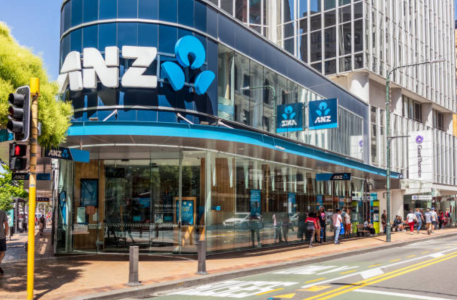Banks ditch cash as customer experience sparks concern
By
Gian T
- Replies 0
If you’ve ever popped into your local bank branch expecting to walk out with a wad of cash, only to be told, 'Sorry, we don’t do that here anymore,' you’re not alone.
The banking landscape in Australia is changing rapidly, and for many people—especially those who prefer the certainty and security of cash—these changes can be both confusing and frustrating.
Recently, an ANZ customer named Michelle found herself in just such a predicament.
She visited her local ANZ branch in South Melbourne, having made an appointment to withdraw a significant sum of money.
But instead of being handed her cash at the counter, she was told the branch was 'cashless' and would not be able to fulfil her request.
Michelle was, in her own words, 'dumbfounded'.
So, what’s really going on? Are our banks going cashless, and what does this mean for everyday Aussies—especially those of us who still rely on cash for budgeting, bill paying, or simply peace of mind?
Michelle’s experience highlights a growing trend among Australia’s major banks: the shift from traditional, full-service branches to what is now being called 'specialist hubs'.
These new-style branches look and feel quite different from the banks many of us grew up with.
In the past, you’d walk into your local branch, chat with a teller behind the counter, and handle everything from cash withdrawals and deposits to home loan queries and account issues—all in one place.
But at a specialist hub, things work differently. Instead of over-the-counter cash services, customers are directed to use Smart ATMs and coin deposit machines for their cash needs.
If you want to withdraw a large sum—say, $50,000—you’ll need to make an appointment and visit a full-service branch, not a specialist hub.
ANZ has confirmed that out of its 74 metro Melbourne locations, 35 are now specialist hubs.
And while these hubs aren’t completely 'cashless' (you can still use the ATMs), you won’t find piles of cash behind the counter or be able to make large withdrawals in one go.
The main reason is simple: Australians just aren’t using cash like we used to.
According to the Reserve Bank, cash made up 70 per cent of all transactions back in 2007.
By 2022, that figure had plummeted to just 13 per cent. ANZ says that 99 per cent of its transactions are now digital or via ATMs.
With fewer people needing to withdraw or deposit cash in person, banks are rethinking how their branches operate.
This has led to a decline in traditional teller services and a rise in digital banking, Smart ATMs, and specialist hubs designed to offer more 'personalised' support for things like home loans or business banking.
If you're planning a large cash withdrawal, it's important to understand your options.
At specialist hubs, you're limited to the standard ATM withdrawal cap, usually around $2,500 per day.
For anything beyond that, you'll need to visit a full-service branch—but be sure to book ahead, as it can take a few days for the bank to prepare the requested amount.
Michelle’s story is a cautionary tale: even if you make an appointment, double-check that your branch is a full-service location and confirm your cash needs in advance.
ANZ admitted they should have contacted Michelle before her appointment to clarify her request.
Yes, it’s not just ANZ. The other 'Big Four' banks—Commonwealth Bank, NAB, and Westpac—are all moving towards similar models, with new-style branches that focus on digital services and Smart ATMs rather than traditional cash counters.
Each bank has its own name for these locations, but the experience is largely the same.
Australian Banking Association chief Anna Bligh has said that banks are transforming their branches to keep up with changing customer habits.
While there’s a moratorium on regional branch closures until 2027, the focus is shifting to what services people still need face-to-face—and increasingly, it’s not cash.
For many older Australians, and those living in regional or rural areas, these changes can be particularly challenging.
Not everyone is comfortable with digital banking, and some communities still rely heavily on cash.
While banks have promised to keep some face-to-face services available, the reality is that accessing cash is becoming more complicated.
Westpac, for example, has introduced new 'Service Centres' in some regional areas.
These centres have real bankers on site to help with your needs, but you still can’t get cash over the counter—only via the Smart ATM.
And remember: if you’re ever unsure, it’s always best to call ahead and double-check before making a special trip to the bank. It could save you a lot of time—and a lot of frustration!
 Have you run into trouble trying to withdraw or deposit money at your local branch? Do you prefer the old-fashioned way of banking, or have you embraced the digital revolution? Share your stories and tips in the comments below.
Have you run into trouble trying to withdraw or deposit money at your local branch? Do you prefer the old-fashioned way of banking, or have you embraced the digital revolution? Share your stories and tips in the comments below.
The banking landscape in Australia is changing rapidly, and for many people—especially those who prefer the certainty and security of cash—these changes can be both confusing and frustrating.
Recently, an ANZ customer named Michelle found herself in just such a predicament.
She visited her local ANZ branch in South Melbourne, having made an appointment to withdraw a significant sum of money.
But instead of being handed her cash at the counter, she was told the branch was 'cashless' and would not be able to fulfil her request.
Michelle was, in her own words, 'dumbfounded'.
So, what’s really going on? Are our banks going cashless, and what does this mean for everyday Aussies—especially those of us who still rely on cash for budgeting, bill paying, or simply peace of mind?
Michelle’s experience highlights a growing trend among Australia’s major banks: the shift from traditional, full-service branches to what is now being called 'specialist hubs'.
These new-style branches look and feel quite different from the banks many of us grew up with.
In the past, you’d walk into your local branch, chat with a teller behind the counter, and handle everything from cash withdrawals and deposits to home loan queries and account issues—all in one place.
But at a specialist hub, things work differently. Instead of over-the-counter cash services, customers are directed to use Smart ATMs and coin deposit machines for their cash needs.
If you want to withdraw a large sum—say, $50,000—you’ll need to make an appointment and visit a full-service branch, not a specialist hub.
ANZ has confirmed that out of its 74 metro Melbourne locations, 35 are now specialist hubs.
And while these hubs aren’t completely 'cashless' (you can still use the ATMs), you won’t find piles of cash behind the counter or be able to make large withdrawals in one go.
According to the Reserve Bank, cash made up 70 per cent of all transactions back in 2007.
By 2022, that figure had plummeted to just 13 per cent. ANZ says that 99 per cent of its transactions are now digital or via ATMs.
With fewer people needing to withdraw or deposit cash in person, banks are rethinking how their branches operate.
This has led to a decline in traditional teller services and a rise in digital banking, Smart ATMs, and specialist hubs designed to offer more 'personalised' support for things like home loans or business banking.
If you're planning a large cash withdrawal, it's important to understand your options.
At specialist hubs, you're limited to the standard ATM withdrawal cap, usually around $2,500 per day.
For anything beyond that, you'll need to visit a full-service branch—but be sure to book ahead, as it can take a few days for the bank to prepare the requested amount.
Michelle’s story is a cautionary tale: even if you make an appointment, double-check that your branch is a full-service location and confirm your cash needs in advance.
ANZ admitted they should have contacted Michelle before her appointment to clarify her request.
Yes, it’s not just ANZ. The other 'Big Four' banks—Commonwealth Bank, NAB, and Westpac—are all moving towards similar models, with new-style branches that focus on digital services and Smart ATMs rather than traditional cash counters.
Each bank has its own name for these locations, but the experience is largely the same.
While there’s a moratorium on regional branch closures until 2027, the focus is shifting to what services people still need face-to-face—and increasingly, it’s not cash.
For many older Australians, and those living in regional or rural areas, these changes can be particularly challenging.
Not everyone is comfortable with digital banking, and some communities still rely heavily on cash.
While banks have promised to keep some face-to-face services available, the reality is that accessing cash is becoming more complicated.
Westpac, for example, has introduced new 'Service Centres' in some regional areas.
These centres have real bankers on site to help with your needs, but you still can’t get cash over the counter—only via the Smart ATM.
And remember: if you’re ever unsure, it’s always best to call ahead and double-check before making a special trip to the bank. It could save you a lot of time—and a lot of frustration!
Key Takeaways
- An ANZ customer was left 'dumbfounded' after being unable to withdraw a large sum of cash at a South Melbourne branch, only to discover it was a 'specialist hub' and not a traditional full-service branch.
- Specialist hubs allow customers to use Smart ATMs and coin deposit machines for cash services, but over-the-counter cash withdrawals aren't available, which can catch out customers who aren’t aware of the difference.
- The major banks, including ANZ, CBA, NAB and Westpac, are transforming many branches into these new-style locations in response to the sharp decline in cash transactions, with most banking now happening digitally or at ATMs.
- Australians planning large cash withdrawals or deposits are advised to check ahead and ensure they visit a full-service branch, as the shift to specialist hubs may limit access to certain in-person services.








